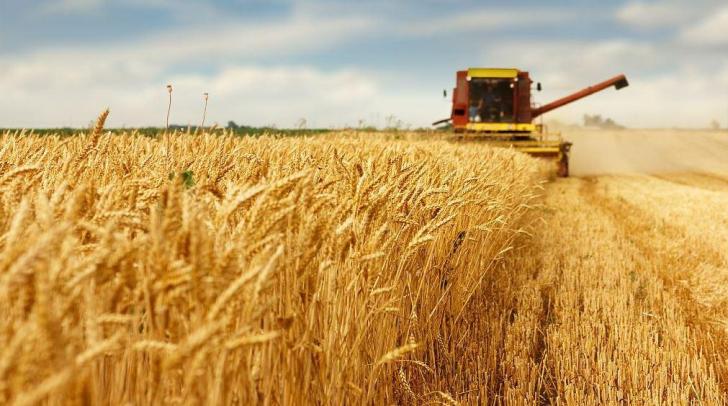News / National
Zimbabwe targets 3,2 million tonnes cereal harvest
11 hrs ago | Views

The Zimbabwean government has announced an ambitious plan to increase cereal production to over 3.2 million metric tonnes in the 2024/2025 summer season, aiming to significantly surpass the 744,000 metric tonnes harvested during the previous season. This goal is part of broader measures to improve food security following the El Niño-induced drought, which affected crop yields last year.
The Presidential-PFumvudza/Intwasa small-scale farming scheme, launched by President Mnangagwa in Buhera, has begun distributing inputs to farmers across the country. The Meteorological Services Department (MSD) has forecasted heavy rains starting next week, raising expectations for a productive season. Farmers are optimistic, particularly as predictions suggest normal to above-normal rainfall, creating favorable conditions for crop growth.
Targeted Production and Input Distribution
Information Minister Dr. Jenfan Muswere highlighted in a recent briefing that the government's efforts could see a rise of 347 percent in overall crop production, aiming to produce over 4 million metric tonnes. The cereal target is set at 3.27 million metric tonnes, while pulses are expected to reach 819,500 metric tonnes. Preparations are well underway, with 91 percent of targeted plots readied and 86 percent of households engaged.
The MSD also advised farmers to consult with Agricultural and Rural Development Advisory Services (Ardas) officers for guidance on planting strategies suited to local water availability. "Rainfall is very much localized," noted MSD. "Consult your local Ardas officers for advice on what to plant and when, taking into account specific water needs."
Agricultural Strategy and Food Security Programs
The government's Agriculture, Food Systems, and Rural Transformation Strategy aims to counter the drought's effects and leverage anticipated La Niña conditions. Dr. Muswere also announced several oversight measures to ensure effective use of inputs, including the blacklisting of officials involved in misuse.
To meet food security needs, the government is distributing 50 percent of inputs by November 24, with 52,500 hectares dedicated to maize, soybeans, traditional grains, and sunflower under the National Enhanced Agricultural Productivity Scheme. The private sector has also pledged support, committing to fund 95,046 hectares of various crops and expand support to 418,800 cotton farmers.
Record Wheat Harvest and Strategic Grain Reserve
This season's winter wheat production reached a record 518,502 metric tonnes, with ongoing harvesting expected to yield over 550,000 metric tonnes. The Grain Marketing Board (GMB) has received over 20,000 metric tonnes of crops from the drought-hit 2023/2024 season, supplemented by government and private sector imports, bringing the Strategic Grain Reserve to 244,296 metric tonnes.
The Food Deficit Mitigation Programme has distributed nearly 198,000 metric tonnes of grain to vulnerable households since February, with additional provisions under the Emergency Schools Feeding Programme to support students across the country.
Dr. Muswere credited President Mnangagwa's strategic guidance for the success of these agricultural programs, emphasizing that these comprehensive efforts aim to achieve lasting food security and economic resilience.
The Presidential-PFumvudza/Intwasa small-scale farming scheme, launched by President Mnangagwa in Buhera, has begun distributing inputs to farmers across the country. The Meteorological Services Department (MSD) has forecasted heavy rains starting next week, raising expectations for a productive season. Farmers are optimistic, particularly as predictions suggest normal to above-normal rainfall, creating favorable conditions for crop growth.
Targeted Production and Input Distribution
Information Minister Dr. Jenfan Muswere highlighted in a recent briefing that the government's efforts could see a rise of 347 percent in overall crop production, aiming to produce over 4 million metric tonnes. The cereal target is set at 3.27 million metric tonnes, while pulses are expected to reach 819,500 metric tonnes. Preparations are well underway, with 91 percent of targeted plots readied and 86 percent of households engaged.
The MSD also advised farmers to consult with Agricultural and Rural Development Advisory Services (Ardas) officers for guidance on planting strategies suited to local water availability. "Rainfall is very much localized," noted MSD. "Consult your local Ardas officers for advice on what to plant and when, taking into account specific water needs."
Agricultural Strategy and Food Security Programs
The government's Agriculture, Food Systems, and Rural Transformation Strategy aims to counter the drought's effects and leverage anticipated La Niña conditions. Dr. Muswere also announced several oversight measures to ensure effective use of inputs, including the blacklisting of officials involved in misuse.
To meet food security needs, the government is distributing 50 percent of inputs by November 24, with 52,500 hectares dedicated to maize, soybeans, traditional grains, and sunflower under the National Enhanced Agricultural Productivity Scheme. The private sector has also pledged support, committing to fund 95,046 hectares of various crops and expand support to 418,800 cotton farmers.
Record Wheat Harvest and Strategic Grain Reserve
This season's winter wheat production reached a record 518,502 metric tonnes, with ongoing harvesting expected to yield over 550,000 metric tonnes. The Grain Marketing Board (GMB) has received over 20,000 metric tonnes of crops from the drought-hit 2023/2024 season, supplemented by government and private sector imports, bringing the Strategic Grain Reserve to 244,296 metric tonnes.
The Food Deficit Mitigation Programme has distributed nearly 198,000 metric tonnes of grain to vulnerable households since February, with additional provisions under the Emergency Schools Feeding Programme to support students across the country.
Dr. Muswere credited President Mnangagwa's strategic guidance for the success of these agricultural programs, emphasizing that these comprehensive efforts aim to achieve lasting food security and economic resilience.
Source - the chronicle




































